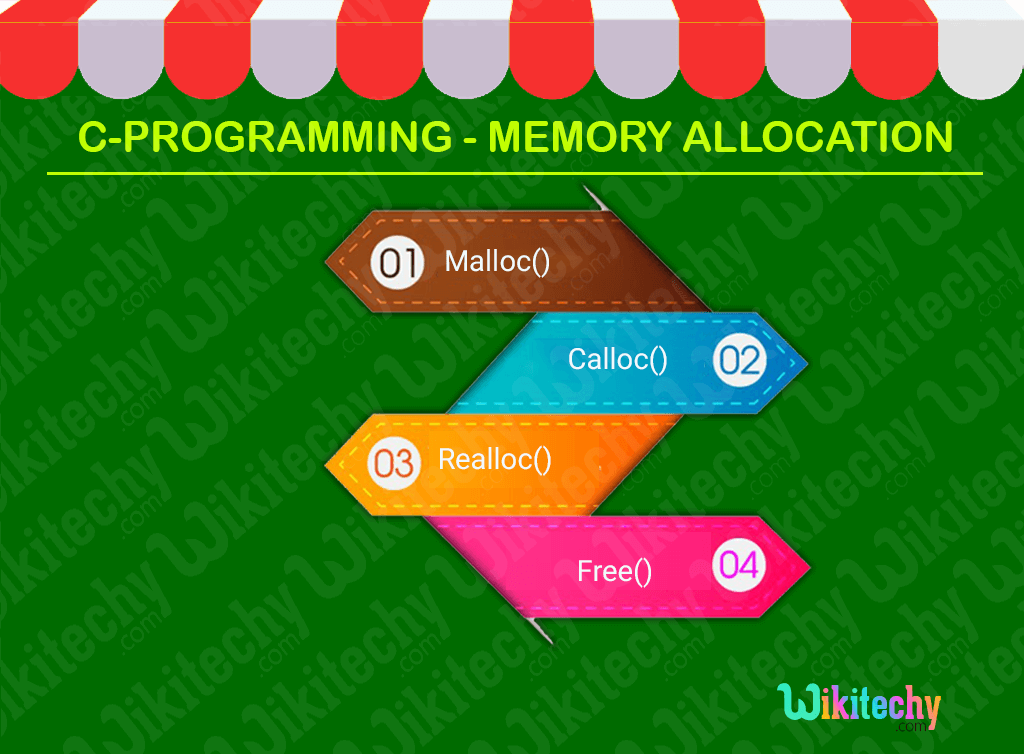C - Dynamic Memory Allocation
Structure and Linked List with C Programming in Tamil
C Dynamic Memory Allocation
- In C- Programming the memory will be allocated at runtime called as dynamic memory allocation.
- Generally, the malloc, calloc and realloc are the three functions used to manipulate memory in C-Programming..

Dynamic Memory Allocation functions :

Malloc() Functions :
- In C-Programming the malloc function is used to allocate space in memory during the execution of the program.
C Syntax
malloc (number *sizeof(int)); Calloc() Function :
- The calloc() function is similar to malloc() function. The calloc () initializes the allocated memory to zero.
C Syntax
calloc (number, sizeof(int)); Realloc() Function :
- In C-Programming the realloc() function modifies the allocated memory size by malloc() and calloc() functions to new size.
C Syntax
realloc (pointer_name, number * sizeof(int)); Free() Function :
- In C-Programming the free () function frees the allocated memory by malloc (), calloc (), realloc () functions and returns the memory to the system.
C Syntax
free (pointer_name);Static vs Dynamic Memory Allocation
| Static Memory Allocation | Dynamic Memory Allocation |
|---|---|
| Memory is allocated at compile time. | Memory is allocated at run time. |
| Memory can't be increased while executing program. | Memory can be increased while executing program. |
| Used in array. | Used in linked list. |
| Less efficient | More efficient |
